Asahi shares mark weekly slide after cyberattack halts production
Introduction & Market Context
Grenke AG (ETR:GLJ) presented its first half-year 2025 results on August 14, 2025, highlighting solid leasing growth amid challenging macroeconomic conditions. CEO Dr. Sebastian Hirsch and CFO Dr. Martin Paal led the presentation, which revealed a complex picture of operational improvements offset by rising credit defaults.
The company described a business environment characterized by volatile global trade due to US customs policies, easing inflation in the Eurozone leading to interest rate decreases, and SME insolvencies that have passed their peak. Despite these challenges, Grenke reported stable market conditions in the leasing sector with continued strong demand for leasing solutions among small and medium enterprises.
H1 2025 Financial Performance
Grenke delivered leasing new business of €1.6 billion in the first half of 2025, representing a 6.7% increase compared to €1.5 billion in H1 2024. The company also improved its CM2 margin to 17.3% from 16.7% in the prior-year period, while reducing its cost-income ratio to 56.4% from 57.1%.
However, these operational improvements were overshadowed by a significant decline in group earnings, which fell 41.8% to €26.2 million from €45.0 million in H1 2024. This decline was primarily driven by a substantial increase in the loss rate to 1.7% from 1.1% in the comparable period.
As shown in the following chart of key financial figures:
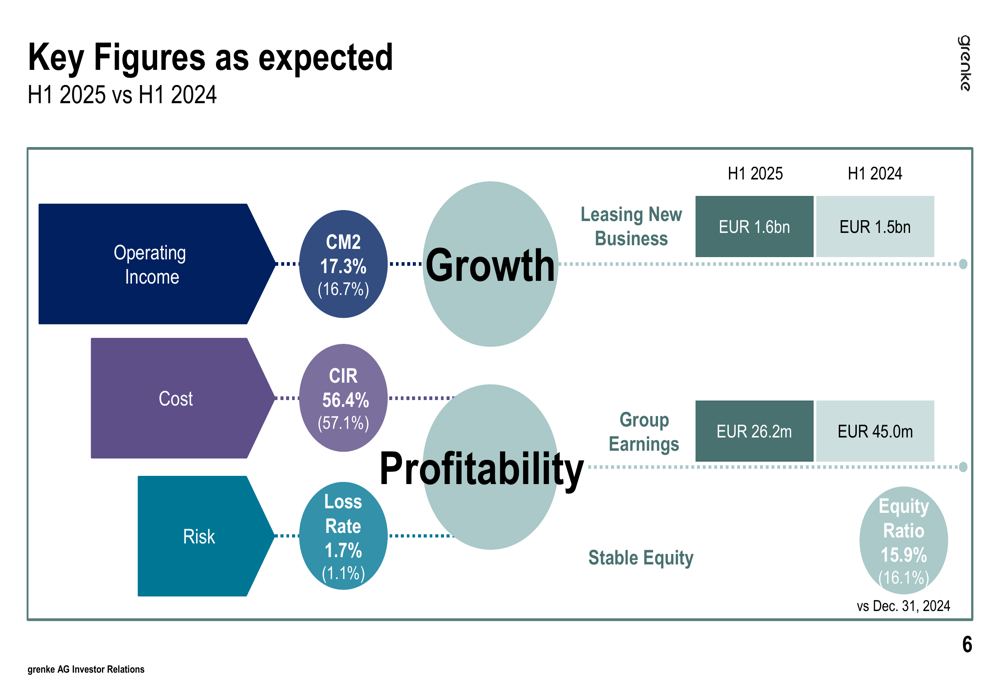
The quarterly earnings trend shows some improvement in Q2 2025 (€16.0 million) compared to Q1 2025 (€10.2 million), but remains significantly below 2024 levels. Management projects continued recovery in the second half of the year.
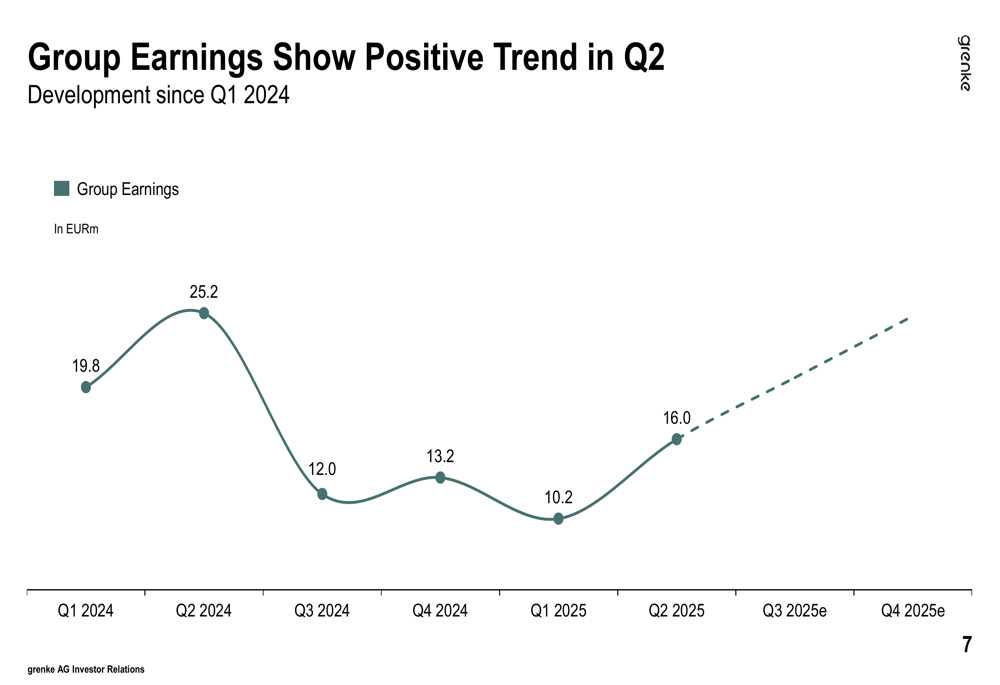
A closer examination of leasing new business shows consistent quarterly growth, with Q2 2025 reaching €867 million, up from €790 million in Q2 2024. The CM2 margin has also shown improvement, reaching 17.6% in Q1 2025 before moderating slightly to 17.1% in Q2 2025.
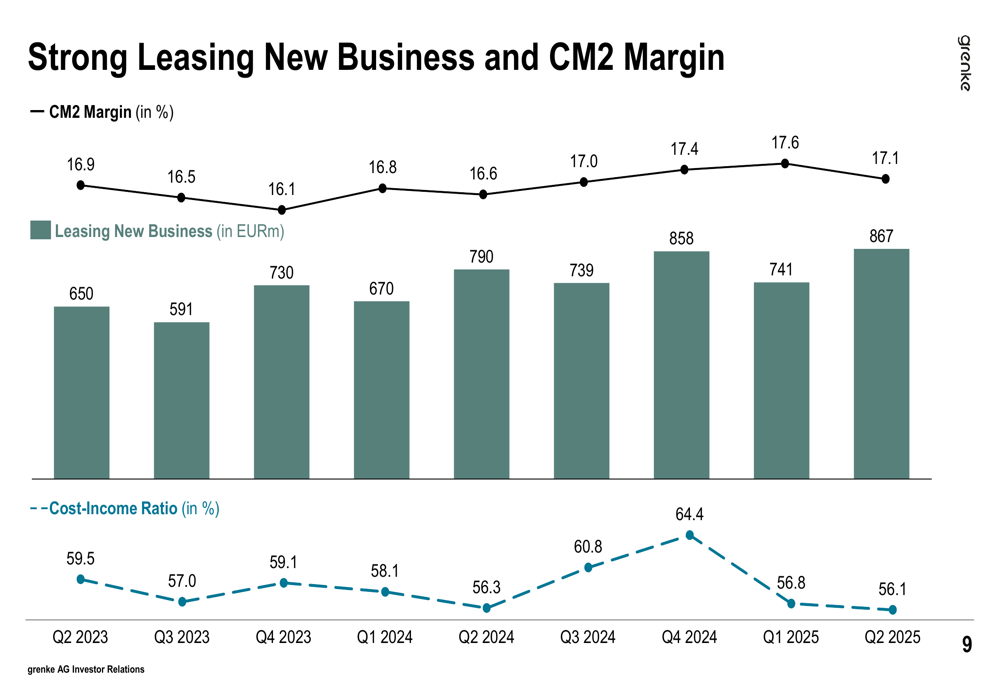
Risk Management and Credit Quality
The primary factor impacting Grenke’s profitability has been the significant increase in claims settlement and risk provisions, which have nearly doubled compared to the previous year. This reflects the challenging credit environment and higher default rates among SME customers.
The following chart illustrates how settlement of claims and risk provisions have increased while operating results before provisions have also grown:
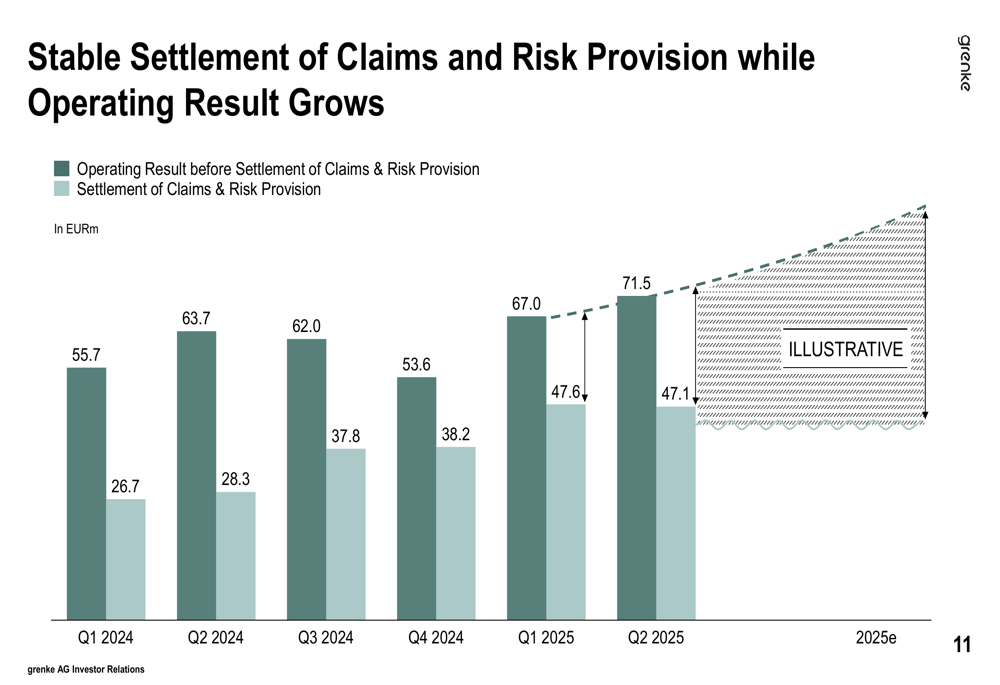
Despite the elevated loss rate of 1.7% in H1 2025, management maintains that risk provisions have stabilized at this higher level. The company’s P&L statement shows that result from claims settlement and risk provision reached €94.7 million, significantly impacting the bottom line despite growth in operating income.
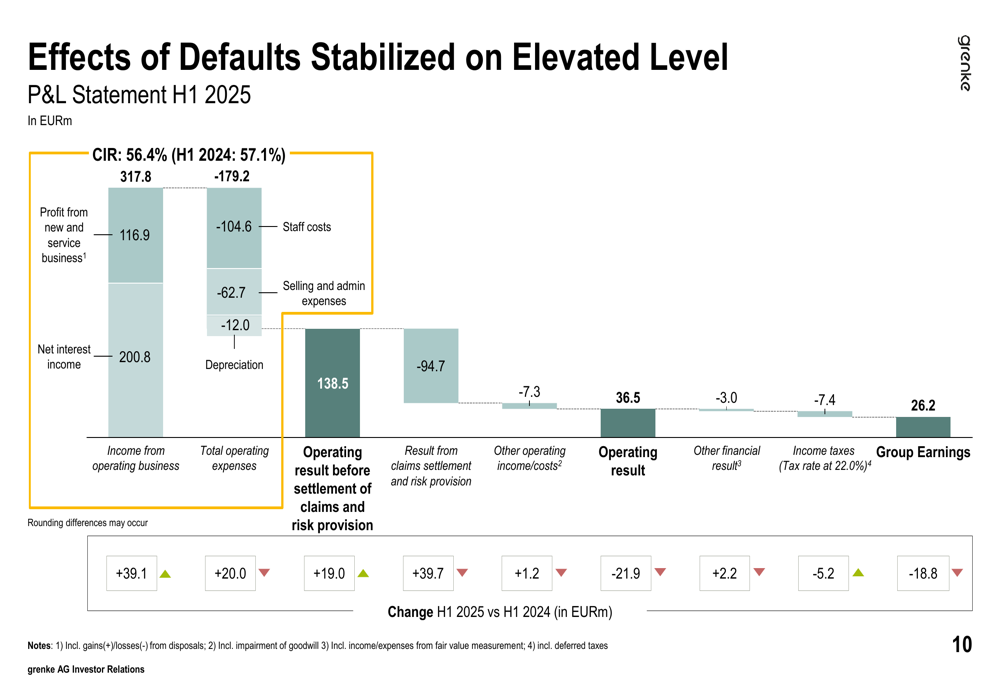
The company’s lease receivables and default metrics provide further insight into credit quality trends:
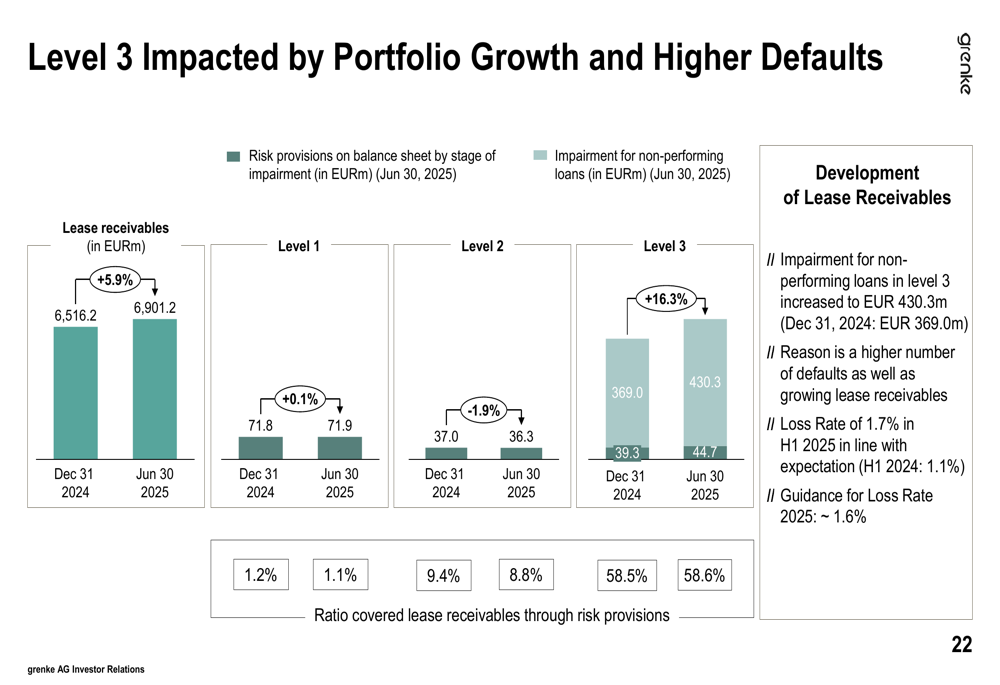
Strategic Initiatives and Partnerships
Grenke highlighted several strategic initiatives during the presentation. The company has reached an agreement to acquire all outstanding franchise companies, with the takeover of Chile already concluded and remaining franchisers expected to be acquired shortly.
Simultaneously, Grenke is divesting its factoring business to Teylor, with the transfer of the Polish subsidiary completed and the entire sale process expected to conclude by mid-2026.
A significant development is Grenke’s new partnership with INTESA SANPAOLO, Italy’s largest bank with over 2,000 branches and approximately 1.2 million business customers. This strategic alliance aims to leverage Grenke’s position as a leading small-ticket leasing provider with INTESA’s extensive distribution network in Italy.
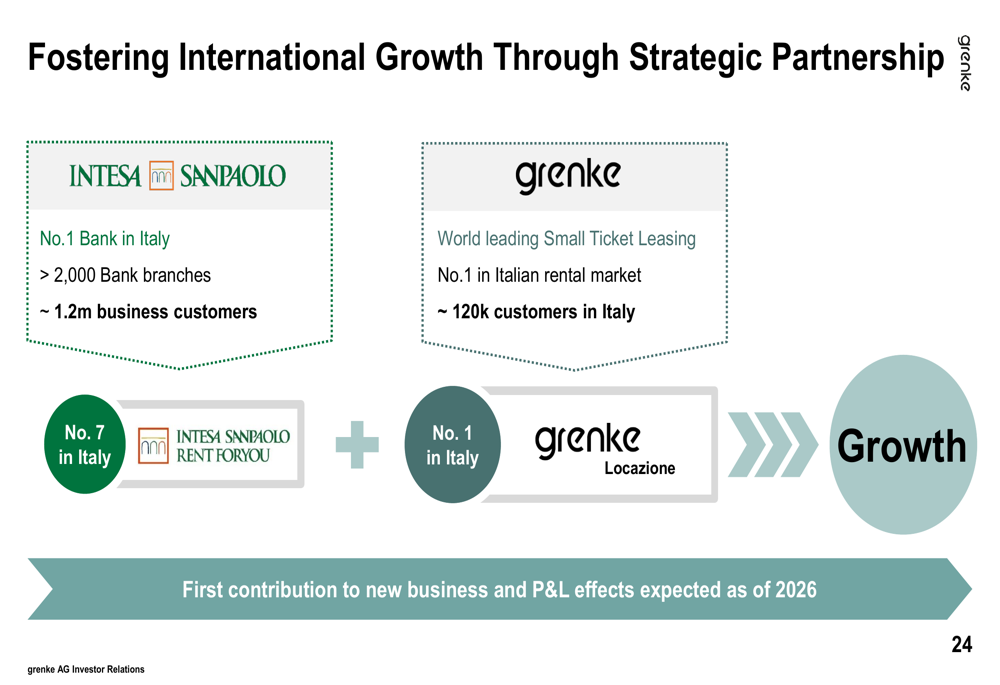
The company’s business continues to focus predominantly on small-ticket leasing, with over 97% of new contracts (by number) being under €50,000, though these represent 68% of the total volume:
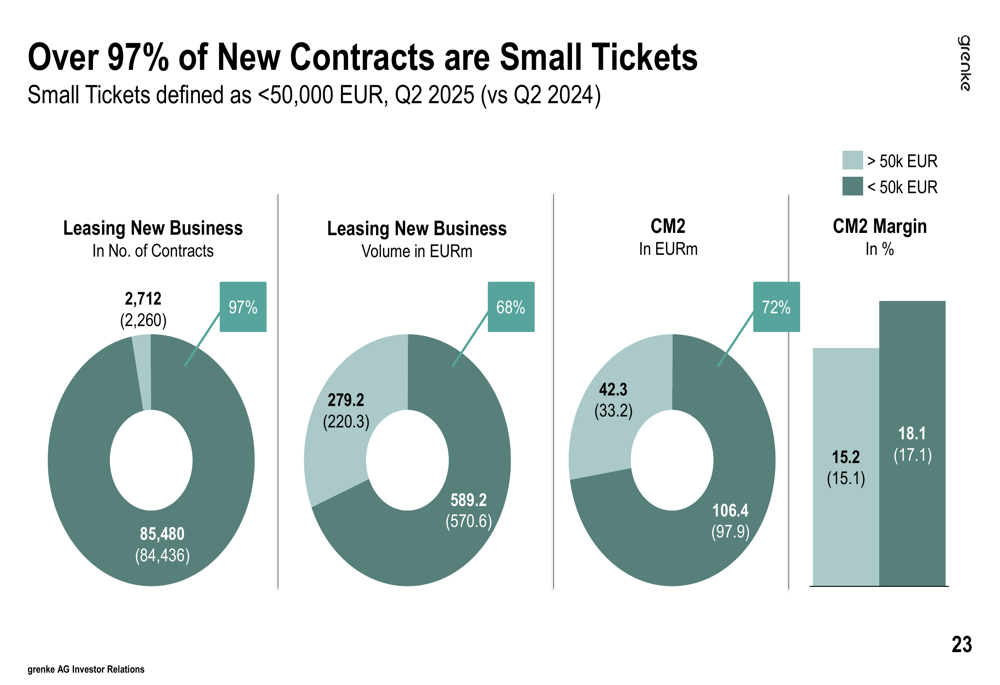
Funding and Capital Structure
Grenke maintains a diversified funding mix to support its leasing business. As of June 30, 2025, the company’s funding sources included senior unsecured debt (34%), Grenke Bank deposits (28%), asset-backed securities (14%), external bank funding (9%), and equity (16%).
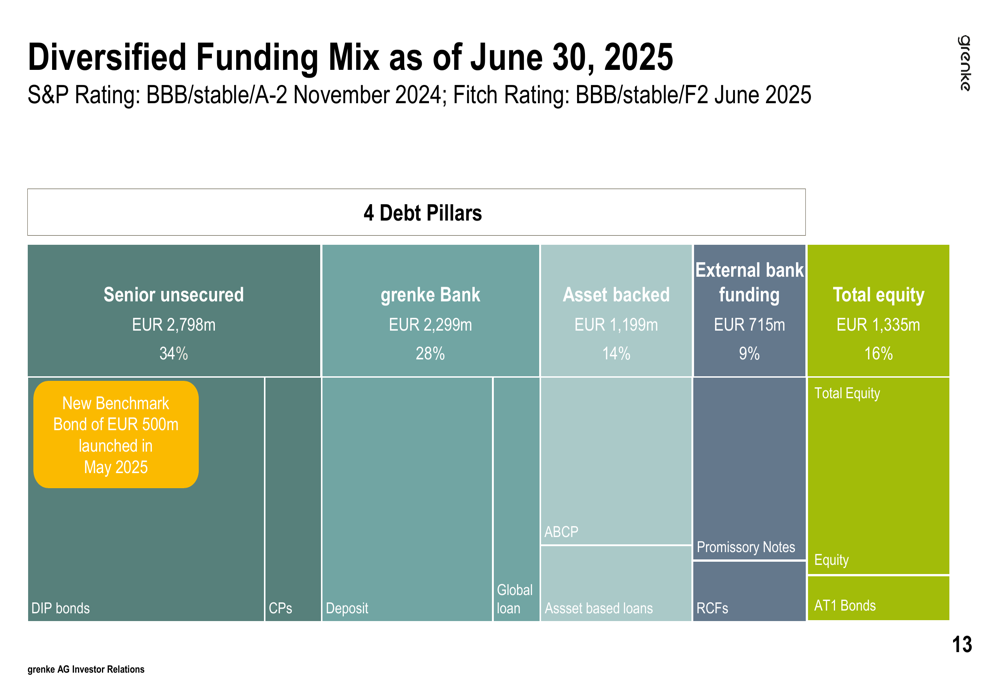
The company successfully placed a €500 million benchmark bond during the first half of 2025, further strengthening its funding position. The equity ratio stood at 15.9% as of June 30, 2025, slightly below the 16.1% reported at the end of 2024.
Outlook and Guidance
Despite the challenging first half, Grenke confirmed its full-year 2025 guidance across all key metrics. The company expects leasing new business to reach €3.2-3.4 billion for the full year, with a CM2 margin above 16.5%, cost-income ratio below 60%, and a loss rate of approximately 1.6%.
Group earnings are projected to reach €71-81 million for the full year, implying a significant improvement in the second half of 2025 compared to the €26.2 million earned in H1.

Management highlighted four key factors supporting their positive outlook: continuous growth of operating income, stabilizing risk provisions, increased cost efficiency, and a solid funding structure reinforced by the recent benchmark bond issuance.
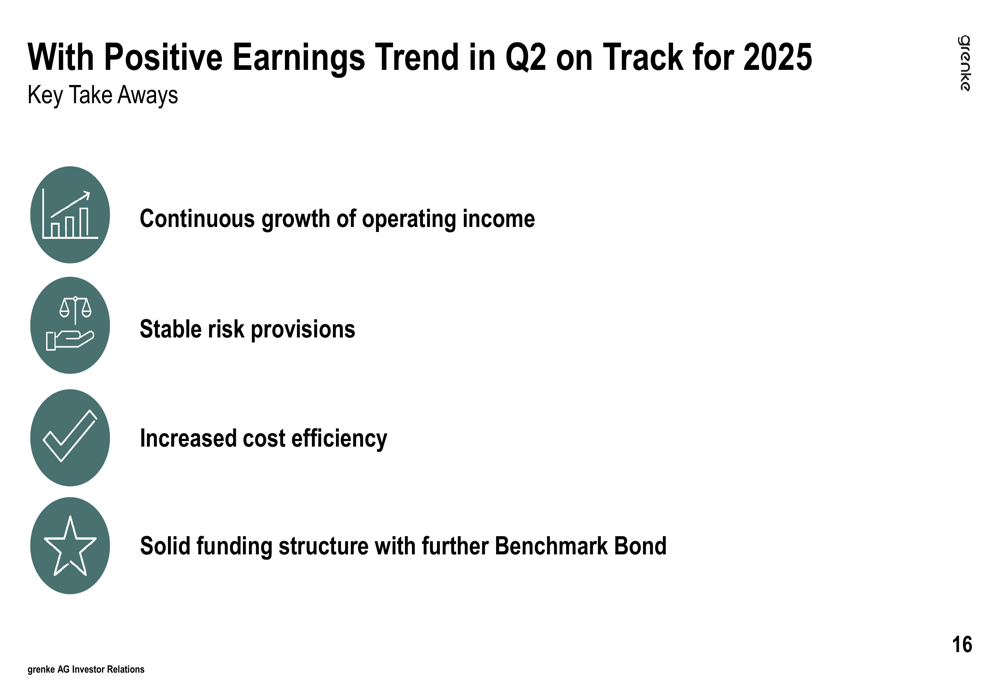
Conclusion
Grenke’s H1 2025 results present a mixed picture. While the company has successfully grown its leasing business and improved operational efficiency, the significant increase in credit defaults has substantially impacted profitability. The 41.8% decline in group earnings highlights the challenges faced in the current economic environment.
Management remains confident in achieving its full-year targets, pointing to stabilizing risk provisions and continued growth in operating income. However, the company will need to demonstrate significant improvement in the second half of 2025 to meet its earnings guidance of €71-81 million, which would require more than €45 million in H2 earnings compared to €26.2 million in H1.
Investors will likely focus on whether the elevated loss rate represents a temporary spike or a more persistent trend, and whether the strategic initiatives, particularly the INTESA SANPAOLO partnership, can deliver meaningful growth to offset these challenges.
Full presentation:
This article was generated with the support of AI and reviewed by an editor. For more information see our T&C.
